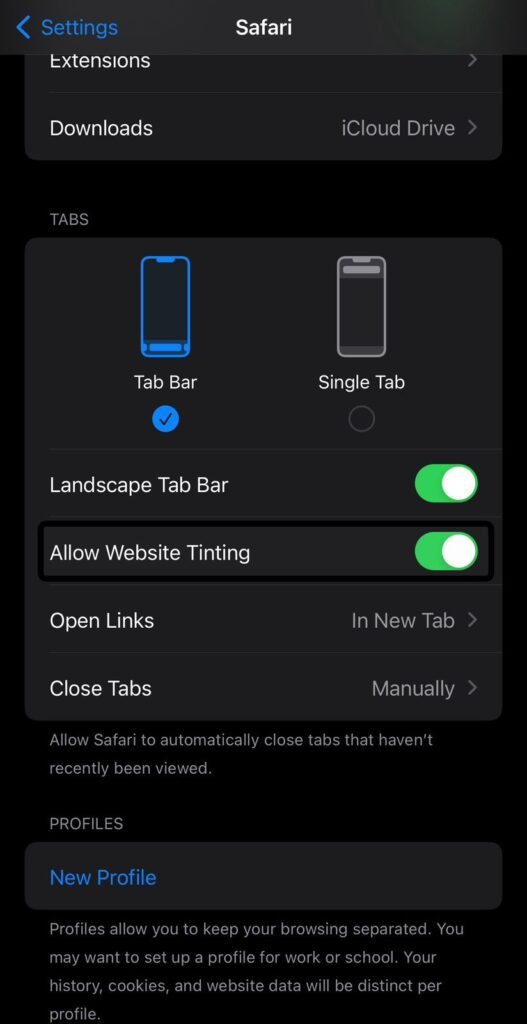Today, when the landscape of digital privacy and user experience has widened, concepts like website tinting have evolved to be a significant feature in protecting user data and enhancing browsing transparency.
The article below highlights the concept of website tinting, its importance in various contexts such as safari and iPhone settings, its implications for privacy and tracking prevention, and its role in the broader framework of digital advertising and user-centric web browsing.
What is Website Tinting?
Website tinting, or tinting, is a visual indicator in web browsers that provides users with a clear signal about the privacy practices of the websites they visit. It is primarily implemented in Safari, Apple’s web browser, to inform users whether a website adheres to privacy-preserving practices or engages in tracking activities.
The tinting phenomenon changes the look of the address bar based on the site’s adherence to privacy standards, enabling users to make an informed decision about their online privacy.
Website Tinting in Safari
In Safari, website tinting is a built-in feature designed to enhance transparency regarding how websites handle user data.
[Picture of safari address bar showing tinting]
When a website meets Apple’s privacy maintenance standards, the address bar in Safari shows a subtle tint, usually a shade of grey or any other designated colour, which indicates that the website is privacy-friendly.
On the contrary, if the website tracks activities invading privacy, the address bar remains untinted, signalling potential risks to user data.
Through this feature, Safari encourages greater transparency and accountability among website operators. It aligns with Apple’s commitment to privacy and enables users to make informed decisions about websites they should trust with their personal information.
What is “Allow Website Tinting” on iPhone?
On iOS and iPadOS devices, users can enable or disable website tinting options from their settings. The “Allow Website Tinting” setting determines whether Safari should display tinted address bars based on a website’s privacy practices.

Enabling this feature lets users receive visual cues about website privacy directly within the browser interface.
Website Tinting Test
To check whether a website qualifies for tinting in Safari, Apple employs rigorous testing criteria; this includes evaluating features such as the site’s use of cookies, adherence to cross-site tracking prevention measures, implementation of privacy-preserving ads measurement, techniques, and compliance with Apple privacy guidelines.
Websites that meet the criteria are rewarded with a tinted address bar, showing their commitment to protecting user data and promoting a safer browsing environment.
Website Data on iPhone
Along with website tinting, Apple devices offer various controls for managing website data. With the latest updates, users can access settings to view, delete, or block cookies and website data; this gives users greater control over their privacy preferences.
Prevent Cross-Site Tracking – Importance and Methods
Cross-site tracking collects user data across websites to create extensive user profiles for targeted advertising and analytics. Apple’s approach to preventing cross-site tracking aligns with its broader privacy initiatives, including website tinting.
Safari implements intelligent tracking prevention (ITP) measures to block trackers and safeguard user privacy; this lowers the risk of unauthorized data collection and increases overall browsing security.
To sum up, as digital privacy continues to gain popularity in global communications, concepts like website tenting are poised to play an important role in shaping the future of online interactions. Safari’s tinting feature enables individuals to make informed decisions by giving users clear visual cues about website privacy practices.





